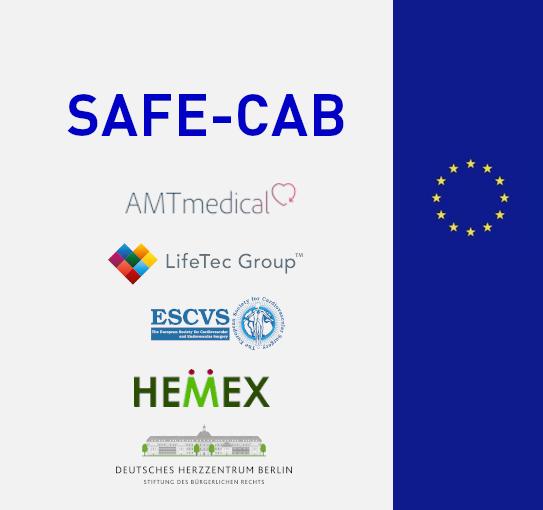The Quest
One of the things we are proud of at LifeTec Group™ is our ability to help prepare surgeons and cardiologists to apply the latest innovations. We recognize the importance of Medical device training, and our Cardiac BioSimulator platform has been used for clinical training projects many times before. Although the Cardiac Biosimulator is a great training facility, it is also rather bulky and not ideal for travelling around with. In order to facilitate on-site clinical training experiences in a more practical way, we set out to make a smaller, more portable version of the Cardiac BioSimulator that still provides a realistic training environment. Even though we often use slaughterhouse hearts, we aim to mimic the human situation as closely as possible in terms of positioning and access paths. Finally, since sometimes using human hearts is simply the best way to train, we are looking into different embalming methods to better preserve these hearts so that they can offer the same reliability as slaughterhouse material.
The Project
To continue our developments to make the Cardiac BioSimulator platform more suitable for on-site cardiac intervention training, LifeTec Group joined the SAFE-CAB project. In this H2020 project, a multidisciplinary consortium consisting of AMT, Deutsches Herzzentrum Berlin (DHZB), HEMEX, the European Society for Cardiovascular and Endovascular Surgery (ESCVS) and LifeTec Group™ are trying to bring to market a new, minimally invasive coronary artery bypass procedure, developed by AMT. An important goal, as each year worldwide over 700 000 patients require treatment for coronary artery disease, with well over 95% of them treated with Coronary Artery Bypass (CAB) surgery. The current surgery is a highly invasive procedure with long recovery times and serious risks associated with it. The SAFE-CAB project aims to develop, prepare and bring to market a minimally invasive, laser-assisted and catheter-based standard of care for CAB surgery. Our role in all this? LifeTec Group will co-develop a training procedure as well as a realistic training environment to provide the surgeons and cardiologists that will use this new technology with the best possible preparation, so that they are well-equipped to perform this surgery right as it becomes available to them. This way, the new procedure can be rapidly implemented, greatly reducing recovery times and complications for many patients.
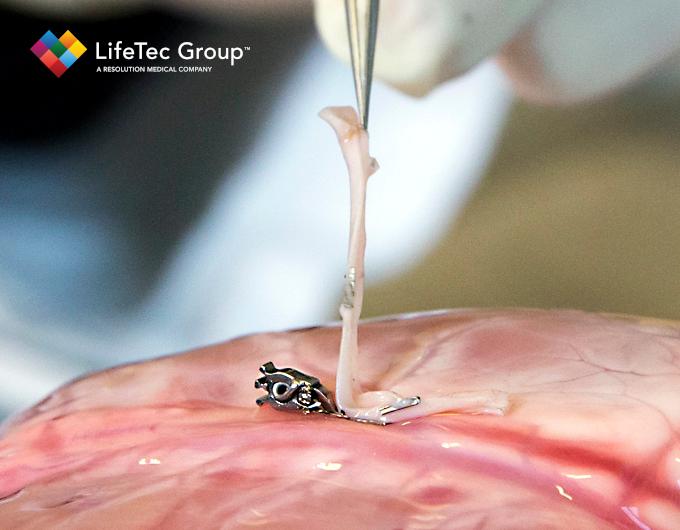
Open chest coronary bypass procedure is very invasive
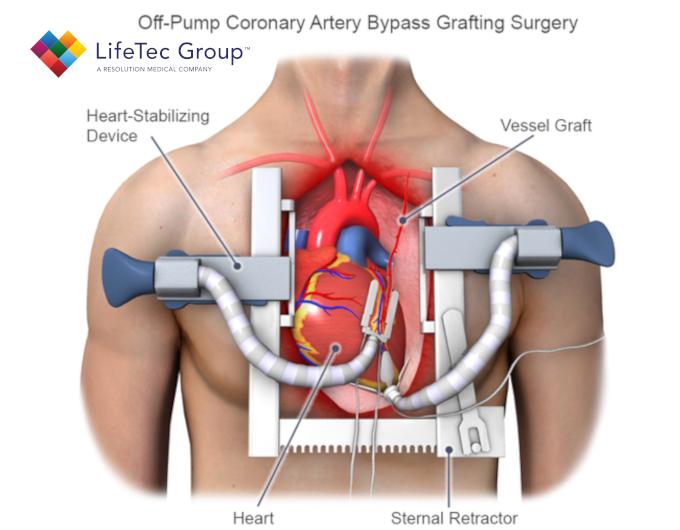
The SAFE-CAB team

Work in Progress
In the sections below, we will provide updates of our progress as the project advances in time. Stay tuned for the latest additions!
Training Simulator
So far, we’ve already made great progress on downsizing the Cardiac BioSimulator by making parts smaller and simplifying some key elements, such as the compliance for the preload and the base plate that holds all the parts together. On top of that, we've learned that a lot of the acquisition and control systems can be made a lot smaller than we had before, giving us a big boost in portability. This also allowed us to operate everything on low DC voltages, making it even easier to use in different (clinical) settings globally. Eventually, we're aiming to get the system itself so small that a person could bring it on a plane as luggage, making it portable and easy to bring to training centres, skills labs and hospitals all over the world.
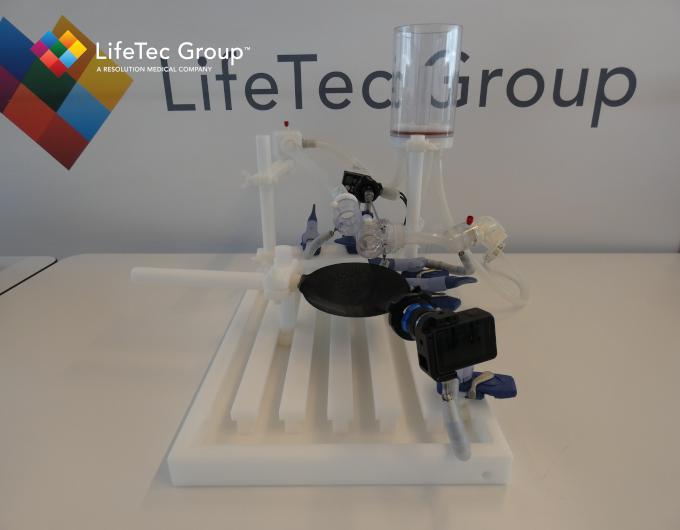
Hemodynamic Simulations
To create even more in-depth knowledge to the bypass procedure, LifeTec Group added computer simulation modelling to the project, helping to increase insights into the clinical procedure for the current clip designs in specific anatomical features and hemodynamic conditions. LifeTec Group partnered with the CardioVascular Biomechanics (CVB) group at the Eindhoven University of Technology to set up Computational Fluid Dynamics simulations of the coronary bypass procedure to improve the knowledge of blood flow and pressure losses in the coronary system. This allows the team to explore a wide range of scenarios of clinically relevant settings, that can help to create better insights and detailed understanding of specific cases, and potentially improve the outcome of the bypass intervention.
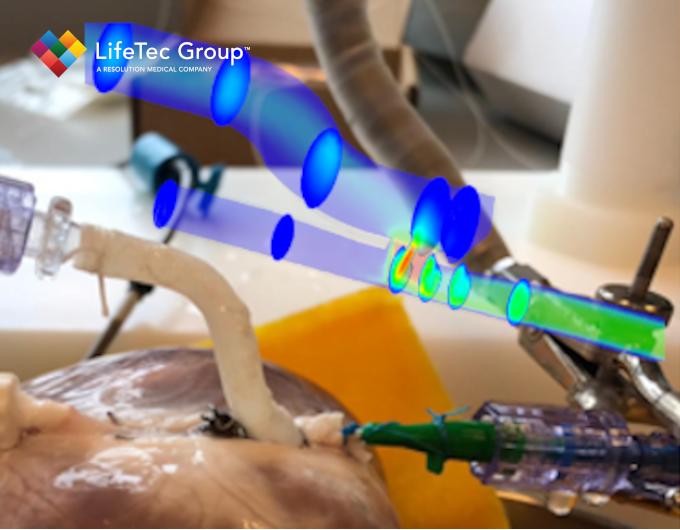
Humanizing Anatomy
One of our next goals will be to make sure that the orientation of the heart and the relative position of the donor vessel is correct in relation to other thoracic landmarks, to make the simulator as clinically relevant for training as possible. This means getting correct angles of the different anatomical features to each other, as well as to the device operator, but also to make sure imaging shows what you would expect to see in the clinic. This way, people trained on the Cardiac BioSimulator will not have any surprises when performing the procedure on a patient for the first time.
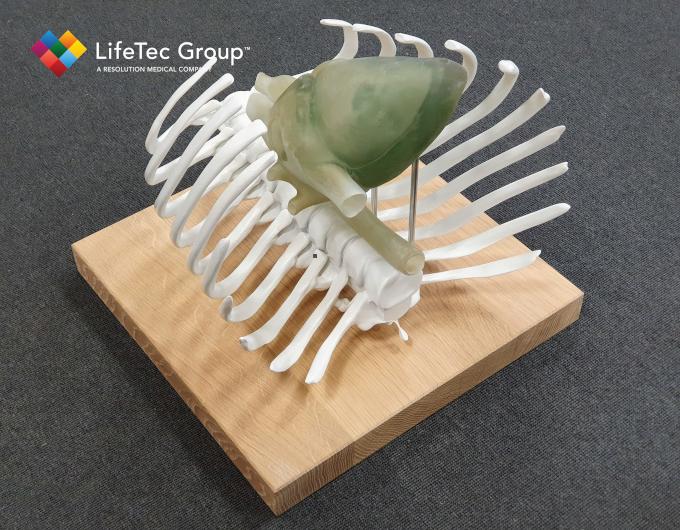
Clinical Training
Together with our consortium partners, work has been done to design a clinical training protocol for the Heart Bypass clipping procedure in which the Cardiac BioSimulator platform has a central role. In that training scenario, cadaveric hearts can be used to allow new trainees to obtain hands-on experience of the bypass procedure on real heart tissue in which the coronary system is perfused with a fluid and the tissue is moving during the procedure. A bypass graft, connected to the system's aorta, will allow the trainee to perform the side-to-side anastomosis on the heart, but also to assess the success of the trained procedure: as both the bypass and the coronary are pressurized, the flow in both blood vessels, as well as pressure drop and leakage, can be observed.
In order to make clinical training even more realistic for a range of cardiac interventions, LIfeTec Group is collaborating with the anatomy department at the Leiden University Medical Center led by prof. Marco de Ruiter. In this collaboration we're exploring how to preserve the cadaveric heart tissues for the long term, preventing deterioration of tissue quality whilst keeping the tissue properties close to those of living tissue. Especially for non-destructive training procedures, this allows repeated use of the same tissue specimens that can be stored in a preservation fluid for months. Besides doing research on these preservation techniques on animal hearts from slaughterhouse origin, the preservation methods will also be applicable to human cadaveric hearts and this will open a wealth of opportunities to make human anatomy and pathologies available for intervention research and training available.
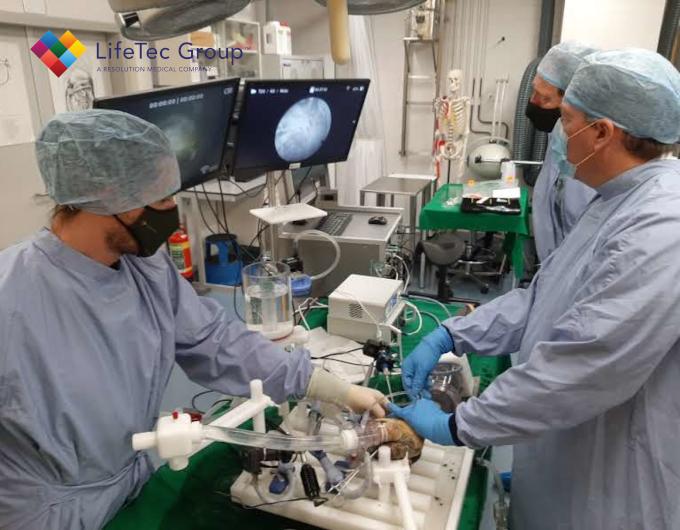
Stay tuned!
This project is a great Case-example of LifeTec Group's activities in supporting new device technology towards clinical application. The content will be updated as the project proceeds, so please stay tuned for more news!
This project has received funding from the European Union's H2020-EU.3 - Priority Societal Challenges programme and H2020-EU.2.1 - Industrial Leadership programme under grant agreement No 869922.
-COLOFON
